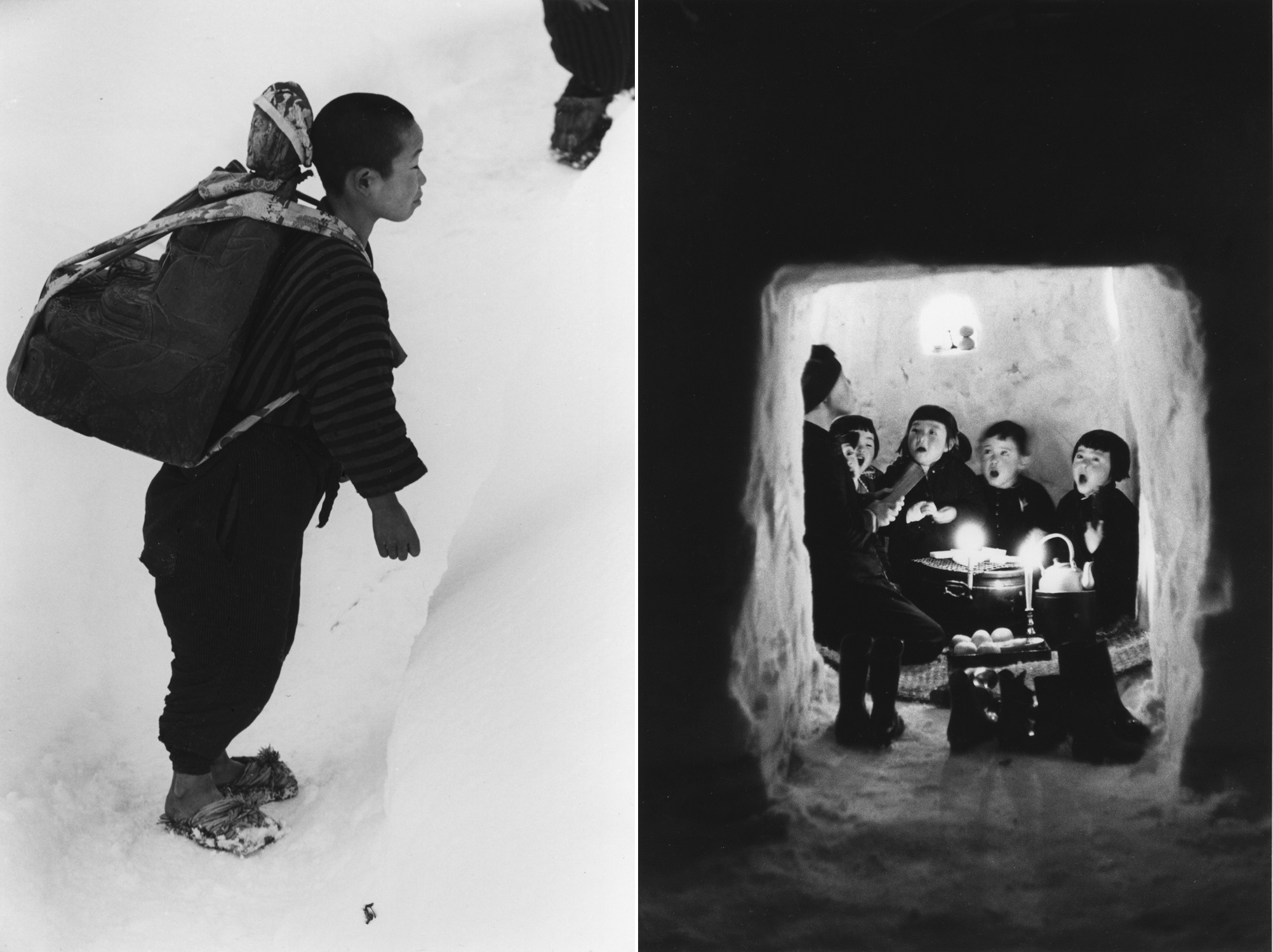Most active in the mid-20th century, the photographer Hiroshi Hamaya (1915-99) is best known for his folkloric images of rural life in Niigata Prefecture — images that some consider to be symbolic of his passive resistance to militarism, but for more critical voices are advocacy of a retrograde cultural essentialism.
These issues aside, as historical documents and prime examples of monochrome film photography, Hamaya's work is invaluable. To commemorate his posthumous 100th birthday, the Setagaya Museum of Art is holding a substantial restrospective, starting in the 1930s and ending in the '80s.
"Boys Singing Songs to Drive Evil Birds Away," taken in 1940 and therefore preternaturally loaded with surplus meaning, has become an internationally recognized iconic image of Japanese photography, in part due to its inclusion in Edward Steichen's 1955 anti-nuclear humanist exhibition "Family of Man." The night photo with an island of light illuminating a line of boys tramping through deep snow manages to be both hopeful and foreboding at the same time. Hamaya's day job at that time, like all other professional Japanese photographers who wanted to continue working during World War II, was to contribute to the war effort by producing propaganda.



